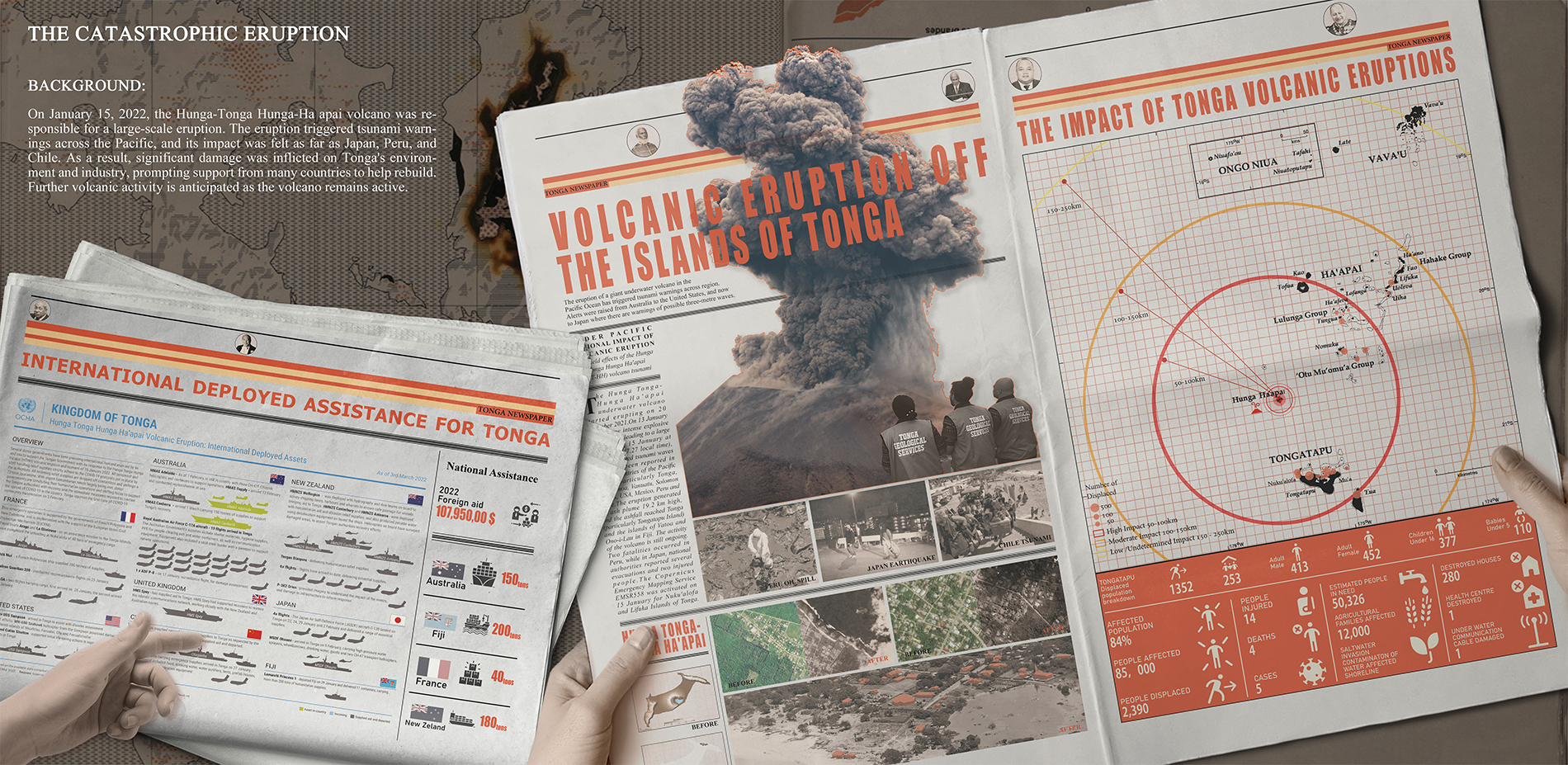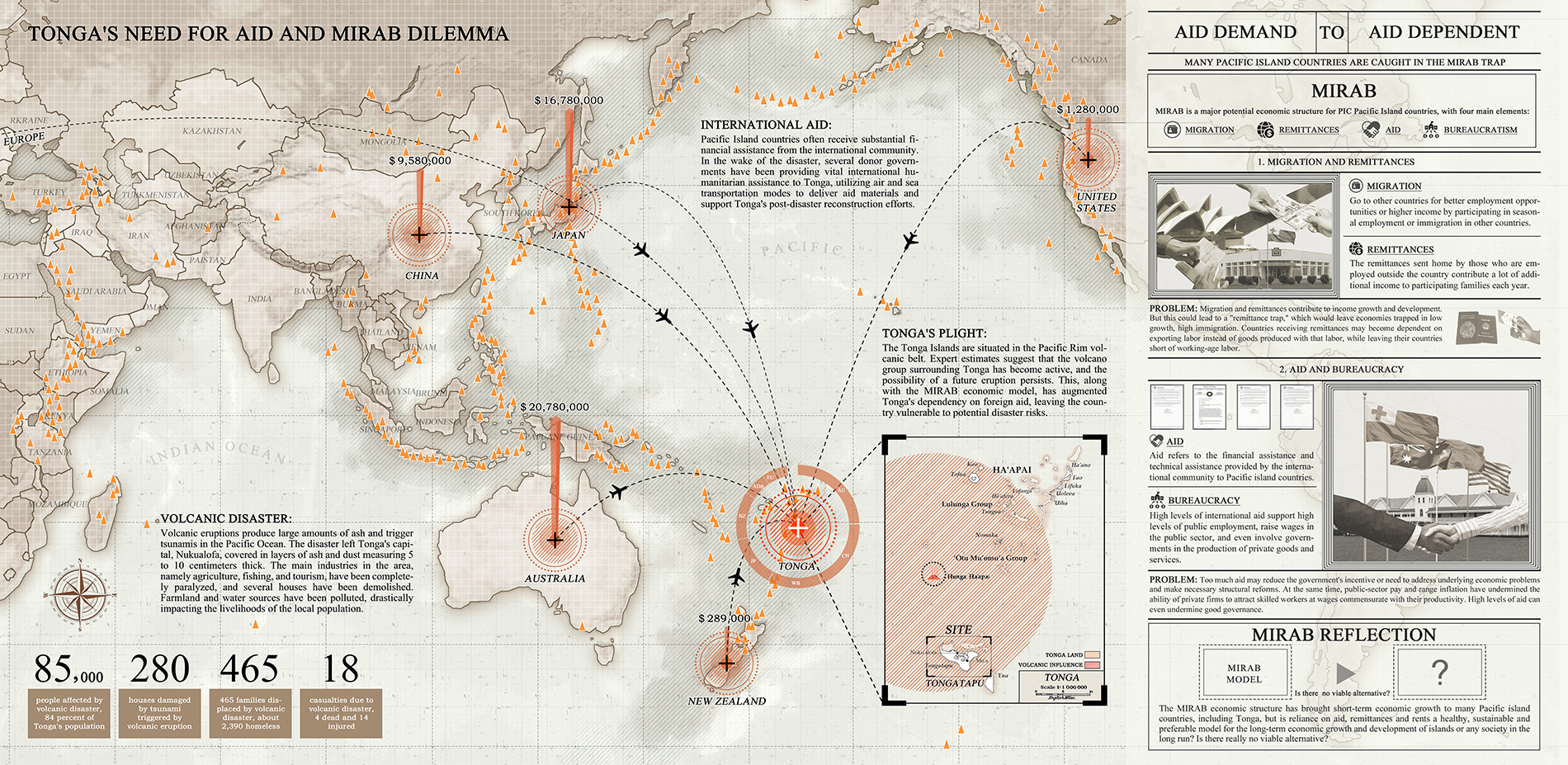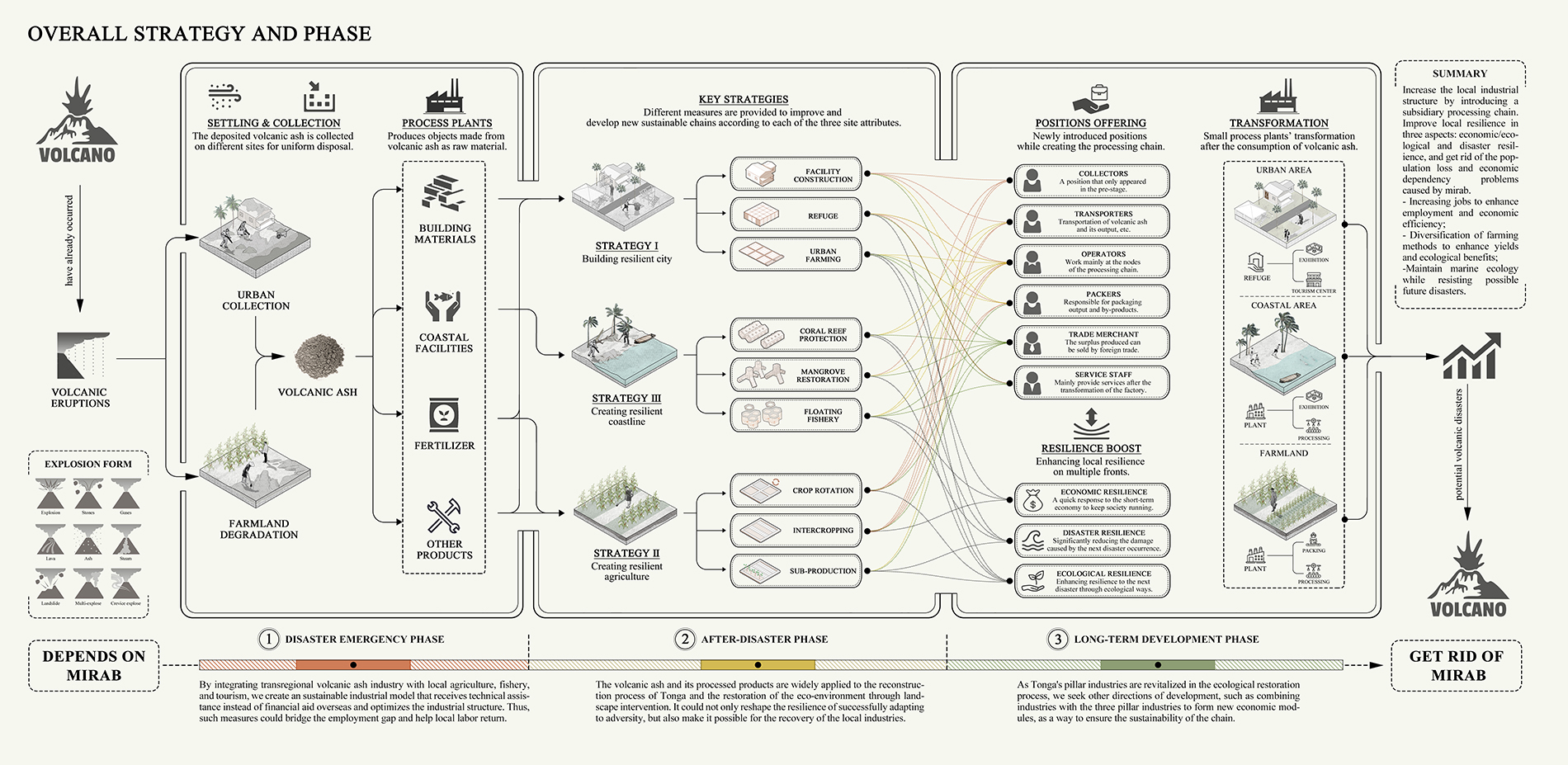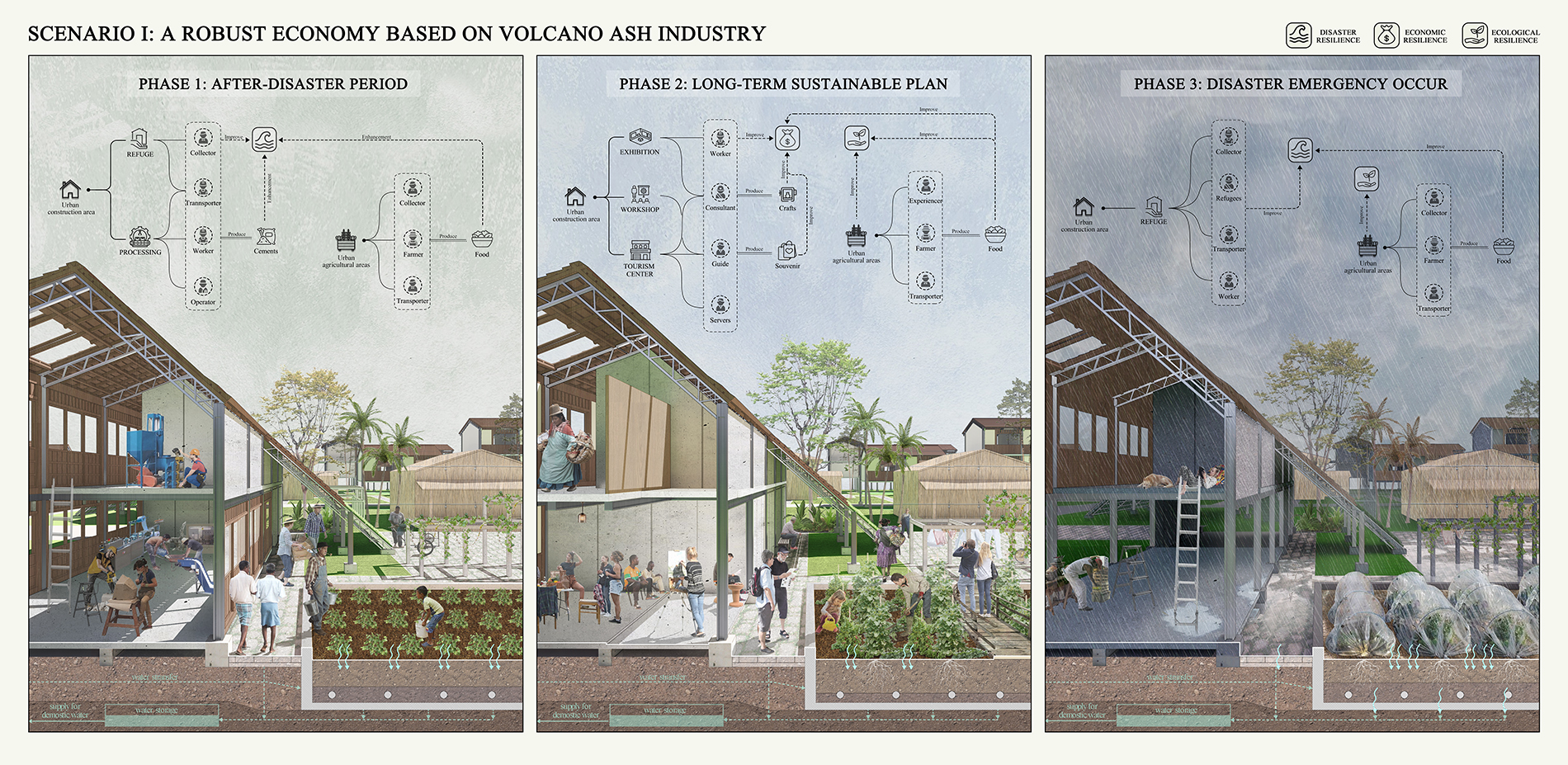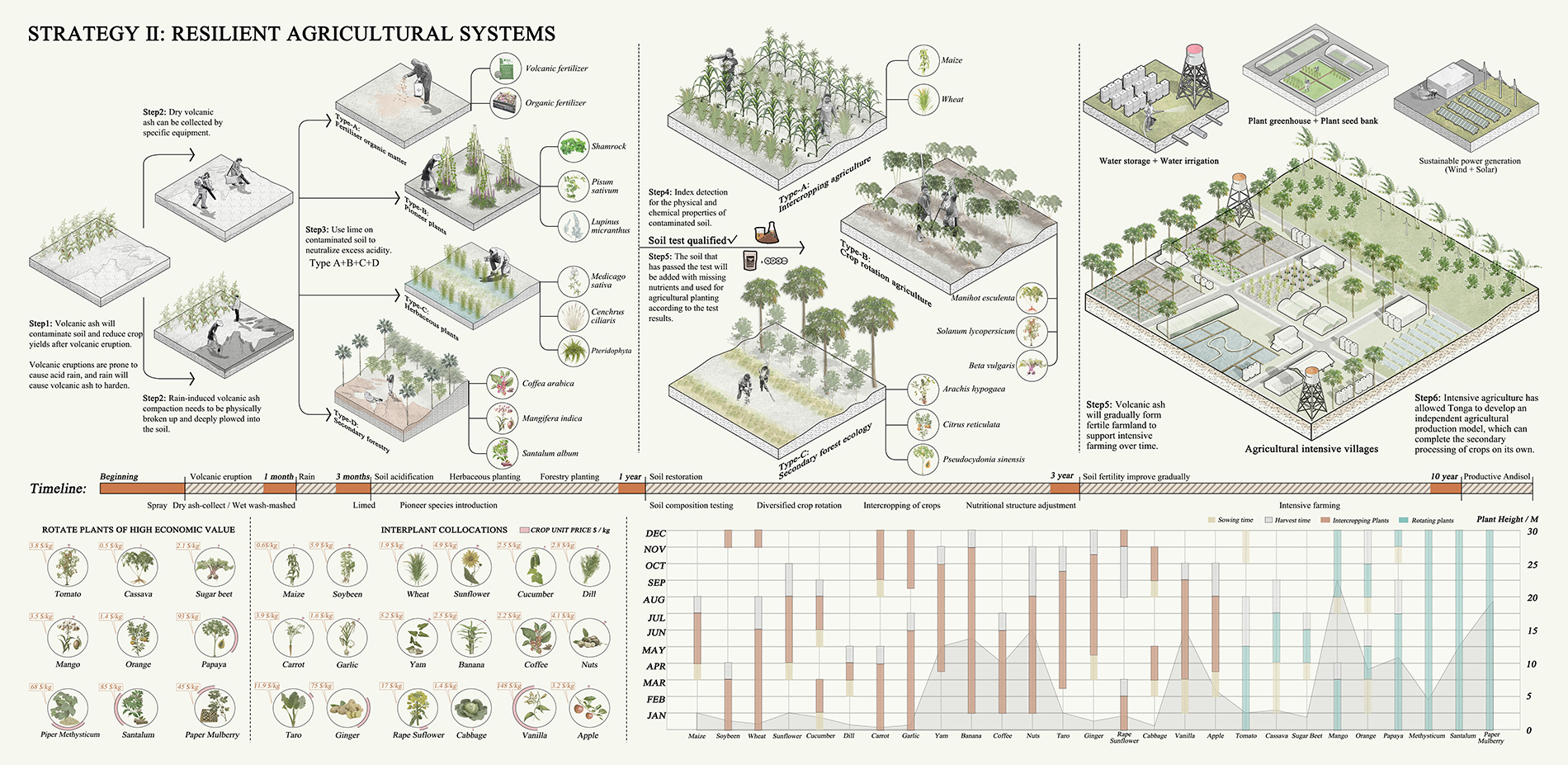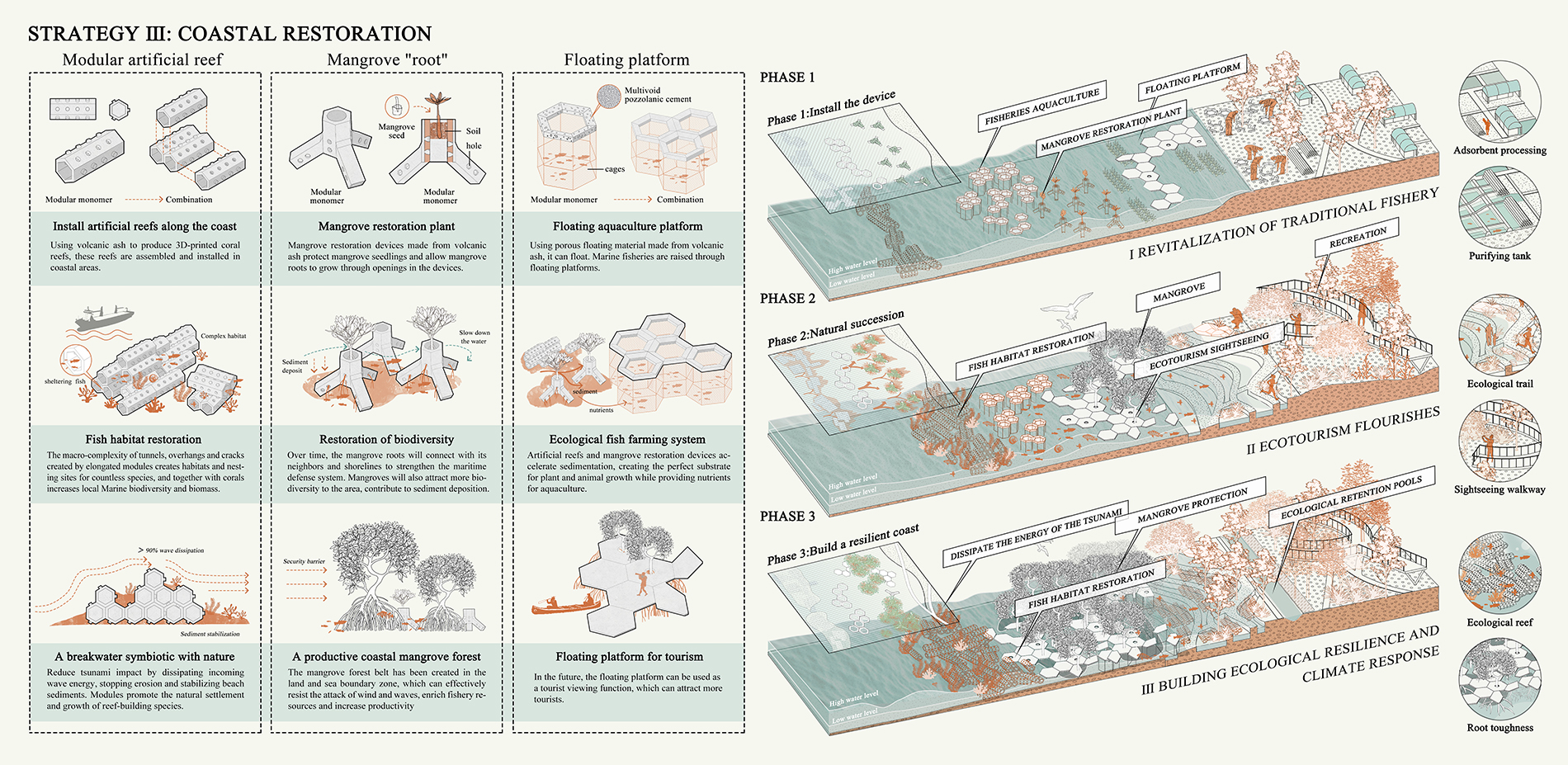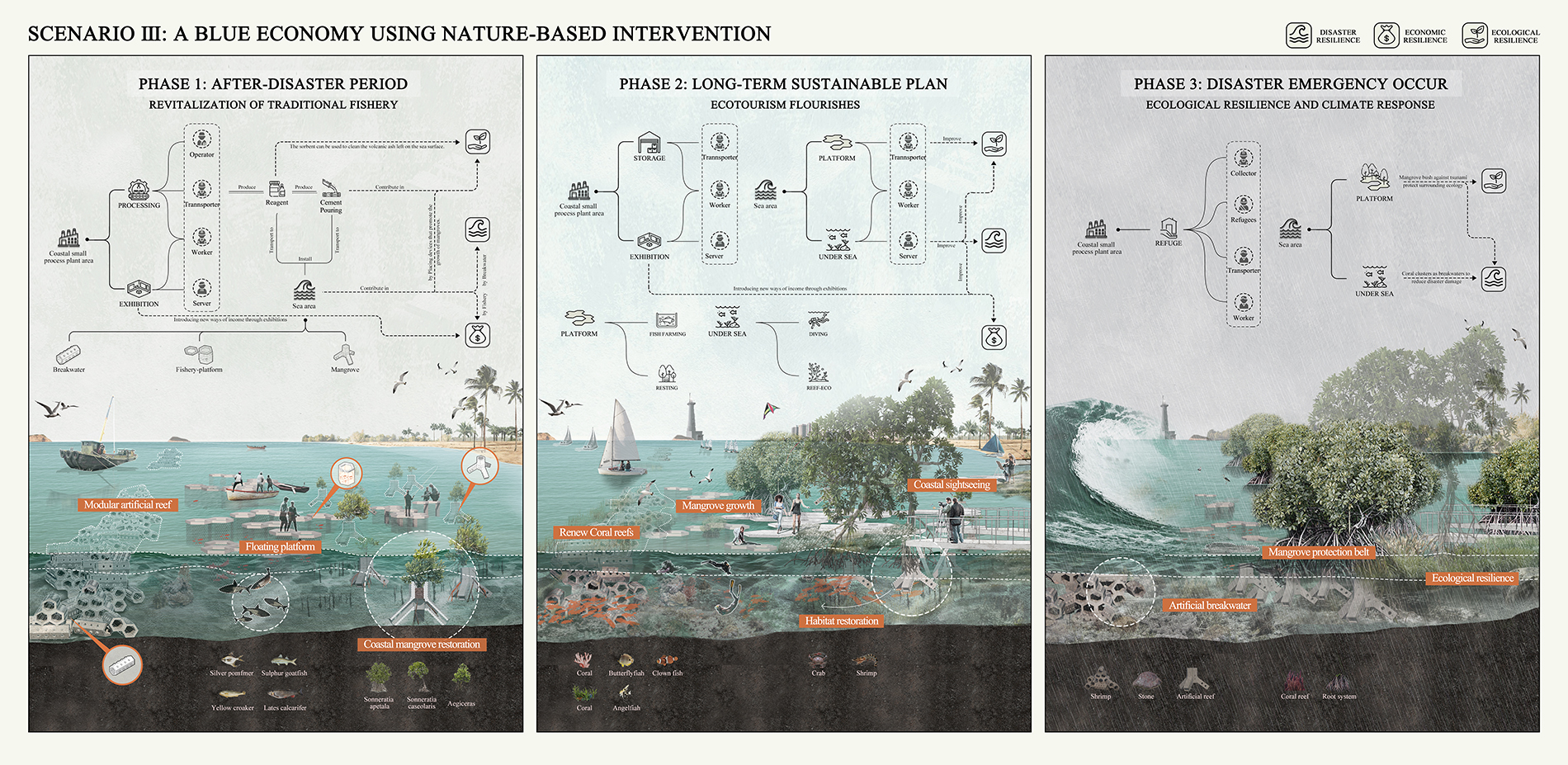The Gift of Volcanoes
Honor Award
Urban Design
Tongatapu, Tongatapu, The Kingdom of Tonga
Shuai Jiang;
Xinyue Liu;
Ziyun Yan;
Sibei Dong;
Yujing Wu, Student International ASLA;
Tengfei Yu;
Faculty Advisors:
Ling Yang;
Chongqing University
Milan Polytechnic University
University College London
Reuse of volcanic ash is an interesting idea
- 2023 Awards Jury
Project Statement
Activated volcanoes, post-disaster reconstruction pressures, and the MIRAB economic model have all increased Tonga's dependence on international aid. The project sees Tonga's reconstruction after the volcanic disaster as an opportunity for sustainable development in the future. Promote environmental and industrial recovery by applying volcanic ash-processed products to cities, farmland, and coastal areas. At the same time, our project accordingly envisages Tonga's strategies for the post-disaster period, the long-term development period, and even another disaster period. Through this holistic approach to a sustainable working landscape, Tonga will get rid of its "MIRAB trap" and achieve ecological and industrial resilience.
Project Narrative
Background:
MIRAB is the economic model for Pacific Island Countries, but it has been criticized for over-reliance on resource allocation and aid, ignoring complex social processes. On January 15, 2022, Tonga faced chaos when a significant volcanic eruption covered the land in ash, destroying countless homes and halting Pillar industries like agriculture, fishing, and tourism. Tonga now faces an even greater dependence on international assistance due to heightened risks from active volcanoes.
Goals and Vision:
Two main solutions to Tonga's challenges are enhancing Tonga's ability to adapt to disasters through environmental resilience and achieving stable employment and economic growth to overcome the challenges posed by MIRAB. The project takes advantage of Tonga's reconstruction as an opportunity for sustainable development by collecting and processing volcanic ash into a variety of products to restore cities, farmland, and coastline. This process can rapidly promote agriculture, fishery, and tourism in Tonga. Our project envisions adaptive strategies for the after-disaster phase, long-term development phase, and disaster emergency phase, to ensure its implementation. By improving Tonga's environmental and industrial resilience, we can enhance Tonga's ability to adapt to potential risks and future disasters, creating a sustainable development model that overcomes the challenges posed by MIRAB.
Strategy 1: Building a disaster-adapting city
Raw volcanic ash is collected and used to repair damaged buildings, and create mixed-use modules for temporary habitat and food sources during disasters, promoting community sustainability. Later, these modules become community factories that process volcanic ash, agriculture, and fisheries. Eventually, they transform into places of volcanic memory, offering participatory workshops and shared farms, attracting visitors. This increases the city's resilience by creating new industries, jobs, and public spaces, addressing MIRAB challenges.
Strategy 2: Establish a sustainable agricultural system
Processing volcanic ash into fertilizer is crucial to restore soil and promote fertility. Planting pioneer species and employing strategies like rotation, intercropping, and forestry will enrich planting structure and expand production capacity, forming the basis for infrastructure development such as greenhouse farming, independent irrigation, and renewable energy. Implementation of this process will improve the economic efficiency and resilience of agriculture by diversifying cash crops and reducing energy consumption, thus helping to alleviate MIRAB.
Strategy 3: Build an ecologically resilient coastline
We use modular structures made of volcanic ash (artificial reefs, mangrove root units, and floating platforms) for post-disaster coastal ecological restoration, protect and restore coral reefs, and create a new mangrove habitat through long-term succession, thus revitalizing Tonga's traditional fisheries and promoting the recovery of tourism. The impact of future potential disasters can be mitigated by creating a more resilient coastal interface, while the revitalization of traditional fisheries and tourism will help alleviate the plight of MIRAB.
Plant List:
- Tomato
- Cassava
- Sugar beet
- Mango
- Orange
- Papaya
- Paper Mulberry
- Maize
- Carrot
- Garlic
- Taro
- Ginger
- Wheat
- Sunflower
- Yam
- Banana
- Cabbage
- Cucumber
- Dill
- Coffee
- Nuts
- Vanilla
- Apple
